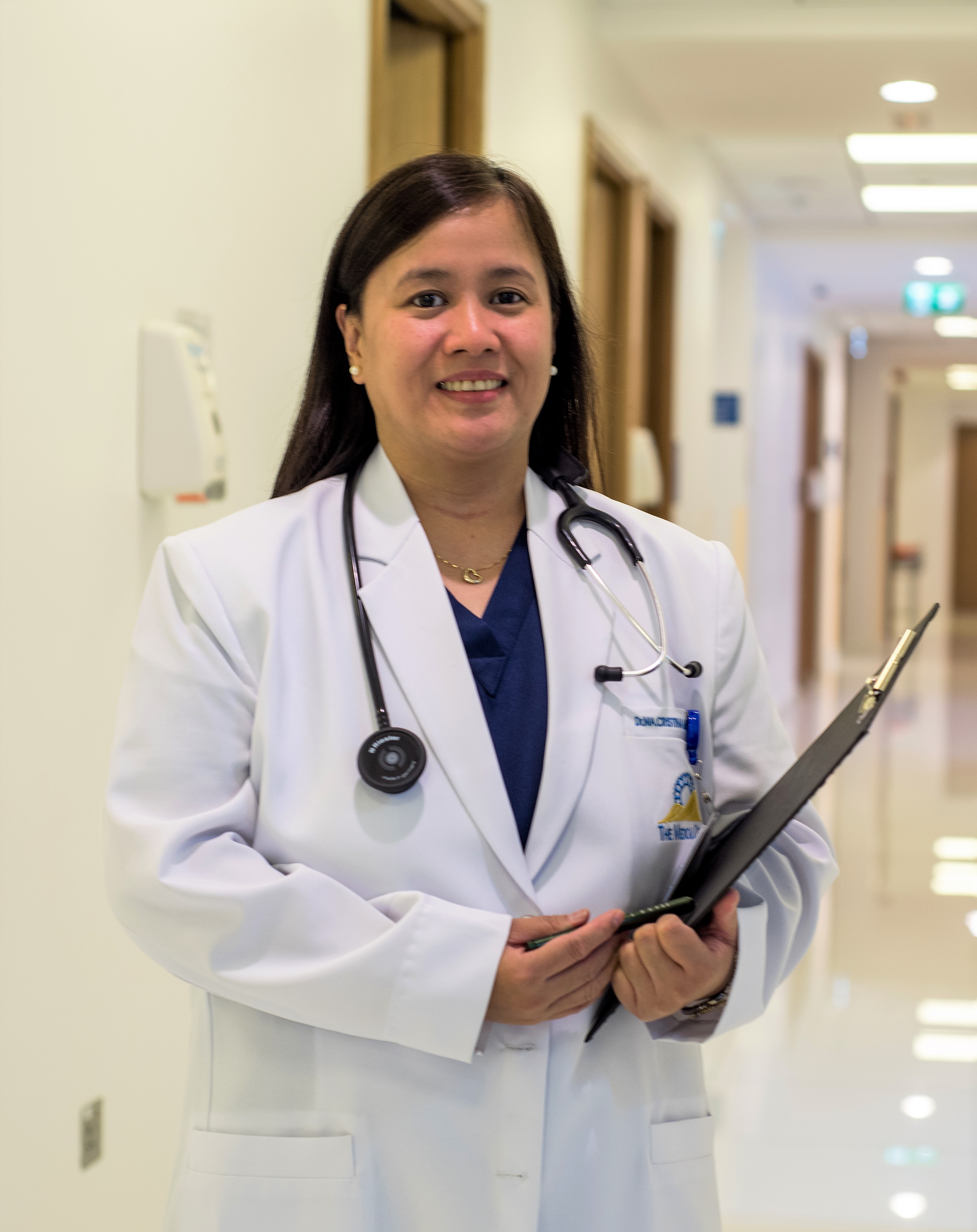‘The most common symptom of breast cancer is a new lump; a painless, hard mass that has irregular edges is more likely to be cancer, but breast cancers can be tender, soft, or rounded. They can even be painful. For this reason, it is important to have any new breast mass, lump, or breast change checked by your doctor.

By: Dr. Maria Cristina M. Fernandez
Specialist – Obstetrics and Gynecology
Most breast cancers begin in the ducts that carry milk to the nipple (ductal cancers). Some start in the glands that make breast milk (lobular cancers). There are also other types of breast cancer that are less common.
Although many types of breast cancer can cause a lump in the breast, not all do. Many breast cancers are found on screening mammograms which can detect cancers at an earlier stage, often before they can be felt, and before symptoms develop.
It’s also important to understand that most breast lumps are benign and not cancer (malignant). Non-cancerous breast tumors are abnormal growths, but they do not spread outside of the breast and they are not life-threatening. But some benign breast lumps can increase a woman’s risk of getting breast cancer.
What are the signs and symptoms of breast cancer?
The most common symptom of breast cancer is a painless, hard mass that has irregular edges, but breast cancers can also be tender, soft, or rounded. They can even be painful. For this reason, it is important to have any new breast mass, lump, or breast change checked by your doctor.
Other possible symptoms of breast cancer include:
- Swelling of all or part of a breast (even if no distinct lump is felt)
- Skin irritation or dimpling (sometimes looking like an orange peel)
- Breast or nipple pain
- Nipple retraction (turning inward)
- Redness, scaliness, or thickening of the nipple or breast skin
- Nipple discharge (other than breast milk)
What are the risk factors for breast cancer?
- Being female.
- Increasing age.
- A personal history of breast cancer.
- A family history of breast cancer.
- Inherited genes that increase cancer risk.
- Radiation exposure. .
- Obesity.
- Having never been pregnant.
- Postmenopausal hormone therapy.
- Drinking alcohol.
Tests and procedures
- Breast exam. Your doctor will check both of your breasts and lymph nodes in the armpit, feeling for any lumps or other abnormalities.
- Mammogram. A mammogram is an X-ray of the breast commonly used to screen for breast cancer.
- Breast ultrasound. Ultrasound uses sound waves to produce images of structures deep within the body. Ultrasound may be used to determine whether a new breast lump is a solid mass or a fluid-filled cyst.
- Removing a sample of breast cells for testing (biopsy). A biopsy is the only definitive way to make a diagnosis of breast cancer.
- Breast magnetic resonance imaging (MRI). An MRI machine uses a magnet and radio waves to create pictures of the interior of your breast.
Staging
Breast cancer stages range from 0 to IV with 0 indicating cancer that is noninvasive or contained within the milk ducts. Stage IV breast cancer, also called metastatic breast cancer indicates cancer that has spread to other areas of the body.
Which treatments are used for breast cancer?
Local treatments: Some treatments are local, meaning they treat the tumor without affecting the rest of the body. Types of local therapy used for breast cancer include:
Systemic treatments:
Dr. Maria Cristina M. Fernandez is a Specialist – Obstetrics and Gynecology at THE MEDICAL CITY, located at 2nd December Street, Jumeirah First, beside Enoc Petrol Station, Dubai, UAE.
Contact No. 04-3434265,0551354820
email: [email protected] , www.samatmc.ae



